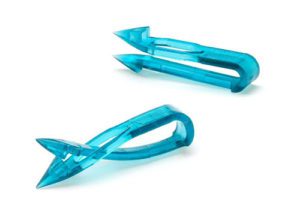
Producing Innovative Micro Medical Devices
By Lindsay Mann, Director of Sales & Marketing
How to Overcome Roadblocks When Producing a Micro Medical Breakthrough
When trying to produce an innovative micro medical design, you may come to a roadblock. What can you do to move forward and get the project back on track? First, determine the source of the problem. Is your supplier having problems? Is there an issue with your design? Some common warning signs your supplier may be failing are:
- Failing validation
- Not achieving lot-to-lot consistency
- Told your design is “impossible”
- Asked to make numerous design compromises
- Lack of communication
- Same issues cropping up
- Time between communication is getting longer and longer
- Feeling you know more than your vendor
- Lead times between samples getting longer – showing disinterest
OVERCOMING SUPPLIER ROADBLOCKS

If your supplier is failing, it’s time to ask the tough questions. Is it truly feasible for your supplier get your product back on track, or will you spend months or years without making progress? Even though you’ve invested time and money with your current supplier, sometimes the best strategy to get your product to market faster is to find a new supplier who is better equipped to address your product’s specific needs and challenges. While it seems like a major expense to change suppliers, it will likely save you money in the long run if your product gets to market faster and efficiently.
Sometimes the molder simply doesn’t have the specialized medical micro molding equipment needed to produce a particular design. Sometimes they don’t have experience or expertise in working with a certain material or challenging design. Other times, a supplier may excel at low volume or on-demand production but cannot efficiently ramp up production.
What does it cost to not do it right the first time? We worked with one of our customers to calculate what it actually cost their company to have their project rescued from a failing supplier. This OEM had developed a concept for a bioabsorbable fixation device that generated excitement and positive comments from reviewing surgeons. Although the company worked with a reputable molder, after five years of labor, the molder had limited success and could not produce the part represented in its drawing with sufficient quality.
After the five years, the OEM decided to cut its losses and start fresh with a different molder. When the OEM tallied its losses, the results were staggering.
Factoring in an estimated one-year delayed market entry, the loss of potential product sales, the time unnecessarily spent in process development, and the cost of restarting their project with a new molder, the sum came to about $1.5 million.
OVERCOMING DESIGN ROADBLOCKS
Are you requesting “no flash”? Requiring extremely tight or challenging tolerances? Assigning a challenging gate location? If so, you may be causing your supplier to chase their tail to solve the problem – or you may be incurring a huge increase to budget and lead time. Is it worth it? Sometimes simple drawing concessions can help.
Inadequate material choice frequently leads to manufacturing issues. There are polymers that demonstrate high compressibility, poor fill properties, poor long term dimensional stability. Tight tolerances like +/- .001″ may be difficult to achieve with these materials. Your design and drawing will dictate what materials can be used.
If you’re tackling design roadblocks, talk to your supplier. They should be able to guide you on better material choice or simple design concessions that will help meet the goals of your part’s functionality.
How can you determine what’s completely unrealistic vs. pushing boundaries?
Engage early. Get a clear understanding of whether your design can translate to injection molding by engaging your molder as soon as possible – and if it can’t, understand why not.
Push the boundaries. Go to industry experts to understand what elements of your design realistically possible and what boundaries can be pushed. When requesting quotes for a micromolding project, ask molders to show similar examples of parts they have created that are similar to your design.
Go with the “true positive.” A molder that is open with concerns and can present options for manufacturing success should be more comforting than a molder with zero concerns or interest in drawing optimization.
Don’t make assumptions. Bring your grand ideas to your molding partner and discuss your wishlist for your design(s). If you allow the molder to evaluate what is possible and realistic as a long-term molding solution, they can listen to your expectations and provide substantive feedback.
How can you efficiently work with a molder to produce your breakthrough idea?
Consult early. Consult your molder early in the development process and, if possible, be open to some flexibility in material, dimensions, and timing in order to increase speed to market.
Come prepared. Know what you need for your part with a high level of understanding about the product’s requirements. Express areas of the design you feel are challenging and/or have concerns about to your molder. You understand the limits of your design and the edges of success and failure. This information allows the supplier to assess how they can help from the most productive angle.
Be mindful. Extremely difficult geometries typically require some kind of unconventional approach to the project in order to be successful. Having an understanding of the technology, experience, and knowledge required to create these complex geometries in plastic will help you save you time in your supplier qualification process.
The post Design for Manufacturing Breakthroughs appeared first on MassDevice.
from MassDevice http://bit.ly/2W0minE
Cap comentari:
Publica un comentari a l'entrada